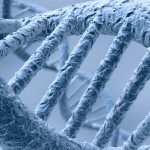Lien vers Pubmed [PMID] – 21951962
Malar. J. 2011 Sep;10:283
BACKGROUND: Recently, Plasmodium falciparum parasites bearing Pfdhfr I164L single mutation were found in Madagascar. These new mutants may challenge the use of antifolates for the intermittent preventive treatment of malaria during pregnancy (IPTp). Assays with transgenic bacteria suggested that I164L parasites have a wild-type phenotype for pyrimethamine but it had to be confirmed by testing the parasites themselves.
METHODS: Thirty Plasmodium falciparum clinical isolates were collected in 2008 in the south-east of Madagascar. A part of Pfdhfr gene encompassing codons 6 to 206 was amplified by PCR and the determination of the presence of single nucleotide polymorphisms was performed by DNA sequencing. The multiplicity of infection was estimated by using an allelic family-specific nested PCR. Isolates that appeared monoclonal were submitted to culture adaptation. Determination of IC(50s) to pyrimethamine was performed on adapted isolates.
RESULTS: Four different Pfdhfr alleles were found: the 164L single mutant-type (N = 13), the wild-type (N = 7), the triple mutant-type 51I/59R/108N (N = 9) and the double mutant-type 108N/164L (N = 1). Eleven out 30 (36.7%) of P. falciparum isolates were considered as monoclonal infection. Among them, five isolates were successfully adapted in culture and tested for pyrimethamine in vitro susceptibility. The wild-type allele was the most susceptible with a 50% inhibitory concentration (IC(50)) < 10 nM. The geometric mean of IC(50) of the three I164L mutant isolates was 6-fold higher than the wild-type with 61.3 nM (SD = 3.2 nM, CI95%: 53.9-69.7 nM). These values remained largely below the IC(50) of the triple mutant parasite (13,804 nM).
CONCLUSION: The IC(50)s of the I164L mutant isolates were significantly higher than those of the wild-type (6-fold higher) and close from those usually reported for simple mutants S108N (roughly10-fold higher than wild type). Given the observed values, the determination of IC(50)s directly on parasites did not confirm what has been found on transgenic bacteria. The prevalence increase of the Pfdhfr I164L single mutant parasite since 2006 could be explained by the selective advantage of this allele under sulphadoxine-pyrimethamine pressure. The emergence of highly resistant alleles should be considered in the future, in particular because an unexpected double mutant-type allele S108N/I164L has been already detected.


